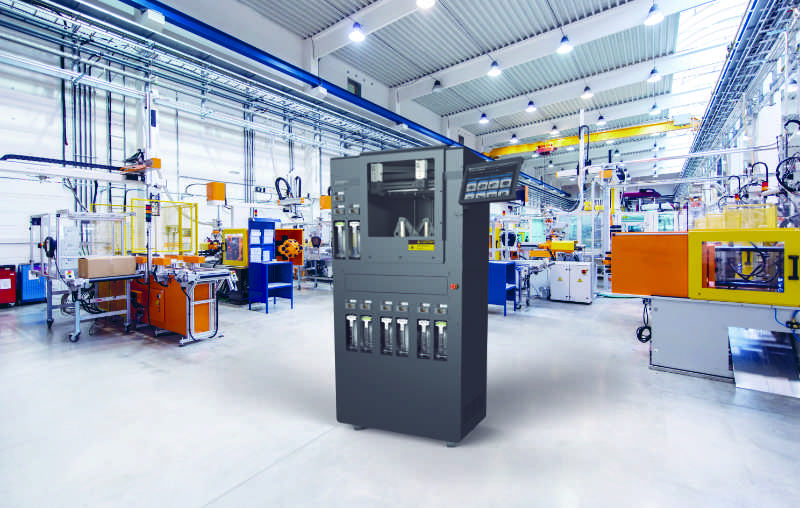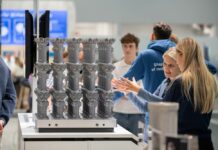In our experience, passion for technology and entrepreneurship DNA can result in companies that can have a disruptive impact on several markets. Add to that fascination for creating real things at a push of a button, and you obtain Xioneer.
With extensive experience in electronic engineering, management consulting and academic research in logistics and operations, Xioneer’s founder, Andrei Neboian, is part of those people that strove to meet the needs of a market which was hungry for a reliable and easy-to-use 3D Printing solution.
At the industrial level, one notes that industrials often start their journey with a desktop 3D Printer before moving to an industrial 3D Printing system. In this Opinion of the Week, Andrei Neboian will discuss a few reasons behind this change. In this vein, the founder will tackle the performance of industrial 3D Printers and will lay emphasis on the user experience on desktop 3D printers.
On which basis can we say industrial 3D Printers are performant?
Industrial-grade 3D-printers are workhorses with performance limits and capabilities set higher than those for desktop 3D-printers. The components and materials are designed for professional use and are engineered to last longer and provide consistent results for years of operation. Moreover, industrial 3D-printers fulfill more demanding customer requirements: they can process engineering-grade plastics and allow access to critical printing parameters to extract maximum performance from the technology. The team behind the industrial 3D-printer must be able to provide quick and competent response to its customers and offer application support beyond mundane maintenance.
Do you think all desktop 3D Printers can satisfy the needs already filled by industrial 3D Printers?
Industrial 3D-printers address specific needs related to larger build-volumes, more demanding print materials, more flexibility and options. In most cases, these customers require a stable system to process engineering-grade plastics into functional end-use parts. Desktop 3D-printers fulfill a different purpose and were not designed to meet these requirements. Nevertheless, some limitations of desktop machines are often not relevant for designers and engineers seeking a solution to make simple prototypes and models. Thus, desktop 3D-printers provide benefits to thousands of customers and represent an entry point to 3D-printing and an opportunity to explore this amazing technology.
How does your industrial 3D Printer distinguish itself from others of the same range?

Xioneer Industrial has a unique blend of system automation and flexibility you will not find in other machines of the same range. The system can provide:
- Stronger Functional Parts: Print with PA, PC, TPU, PA-CF, etc. with material dryers and a heat-chamber
- Two Materials in Two Resolutions (2M-2R): Patented Dual-Material Twin-Head system
- More flexibility: Quickly changeable water-cooled nozzle units and plug-and-play material cartridges
- Simpler Processes: Automated print-setup and patented topographic calibration
- Professional Service: Training, Installation and Application support services
Our highlight is an automatic and precise alignment of both print-nozzles and controlled printing environment which allows our customers to print parts from two materials in two different resolutions – That’s what we call 2M-2R-printing. With 2M-2R, you can make, for example, customized handles with a very robust carbon-fiber-reinforced inner core and a soft ergonomic surface in one print-job. Another example is a mechanical gear with a rigid inner core, and high-resolution low-friction teeth. These parts are either impossible or typically very difficult to make with other 3D-printing systems and technologies. Moreover, printing with 2M-2R reduces build time for large parts by up to 70% while preserving high surface quality. This is possible by printing the outer part shell with our high-resolution nozzle FINE while the invisible inner part filling is printed with our high-throughput nozzle BOLD.
Heated chamber and in-line material drying are critical because they provide the right conditions to process these challenging materials into strong functional parts. Several patented innovations, high-quality components, and hundreds of intelligent algorithms within the Xioneer Industrial ensure consistent results and reduce the risk of failed prints.
What do industrials expect from desktop 3D printers, in terms of improvements?
We often receive requests from industrials who have started their journey in 3D-printing with a desktop machine and are now ready to move to the next step. They demand more repeatable results and the possibility to process engineering-grade plastics. Most of them are already aware that such industrial systems require at least a heated chamber, material drying and a liquid nozzle cooling system. Customers are also aware that such machines require larger investment and a customer support infrastructure which will assist with unique applications or technical issues. I don’t see these expectations being fair towards desktop machines.
How would you describe the Austrian AM market?
Austrian AM market is dynamic and offers a wide variety of solutions and technologies. Being in the heart of Europe and having a rich history in R&D places Austria in a strong position to compete in the field of AM. Our customers in Austria show a great degree of innovation and come up with solutions that help us see a bigger picture of how 3D-printing is applied in the industry.
What are your future projects?
We are focusing on various projects including new materials and new ways to improve customer experience.
Your last word?
Industrial 3D Printing systems and desktop 3D printing systems perform different tasks. Therefore, we can’t say one system is “better than the other”. However, users should be aware of the requirements of their application in order to know the technology that suits them the best. If advanced control and engineering-grade materials are on your list, therefore, industrial 3D Printing is most likely the ideal technology.
Images via Xioneer. You can now post free of charge job opportunities in the AM Industry on 3D ADEPT Media.
For further information about 3D Printing, follow us on our social networks and subscribe to our newsletter!
Would you like to be featured in the next issue of our digital magazine? Send us an email at contact@3dadept.com
https://pagead2.googlesyndication.com/pagead/js/adsbygoogle.js
(adsbygoogle = window.adsbygoogle || []).push({});





